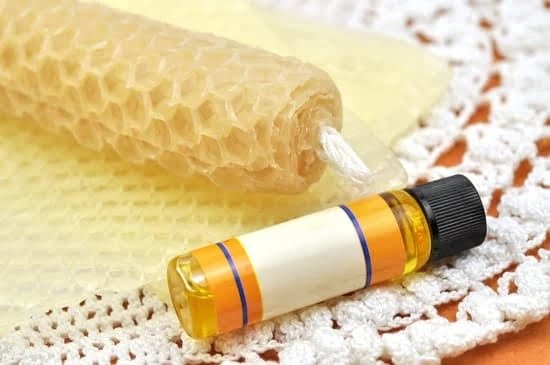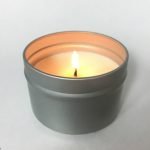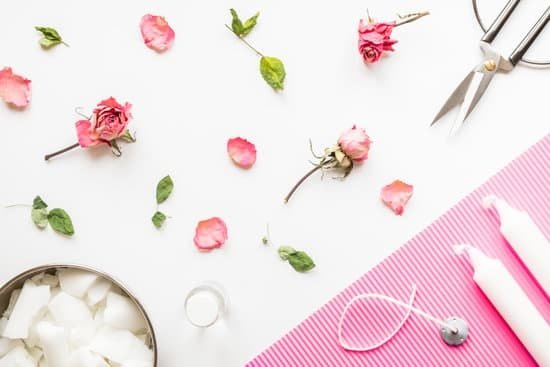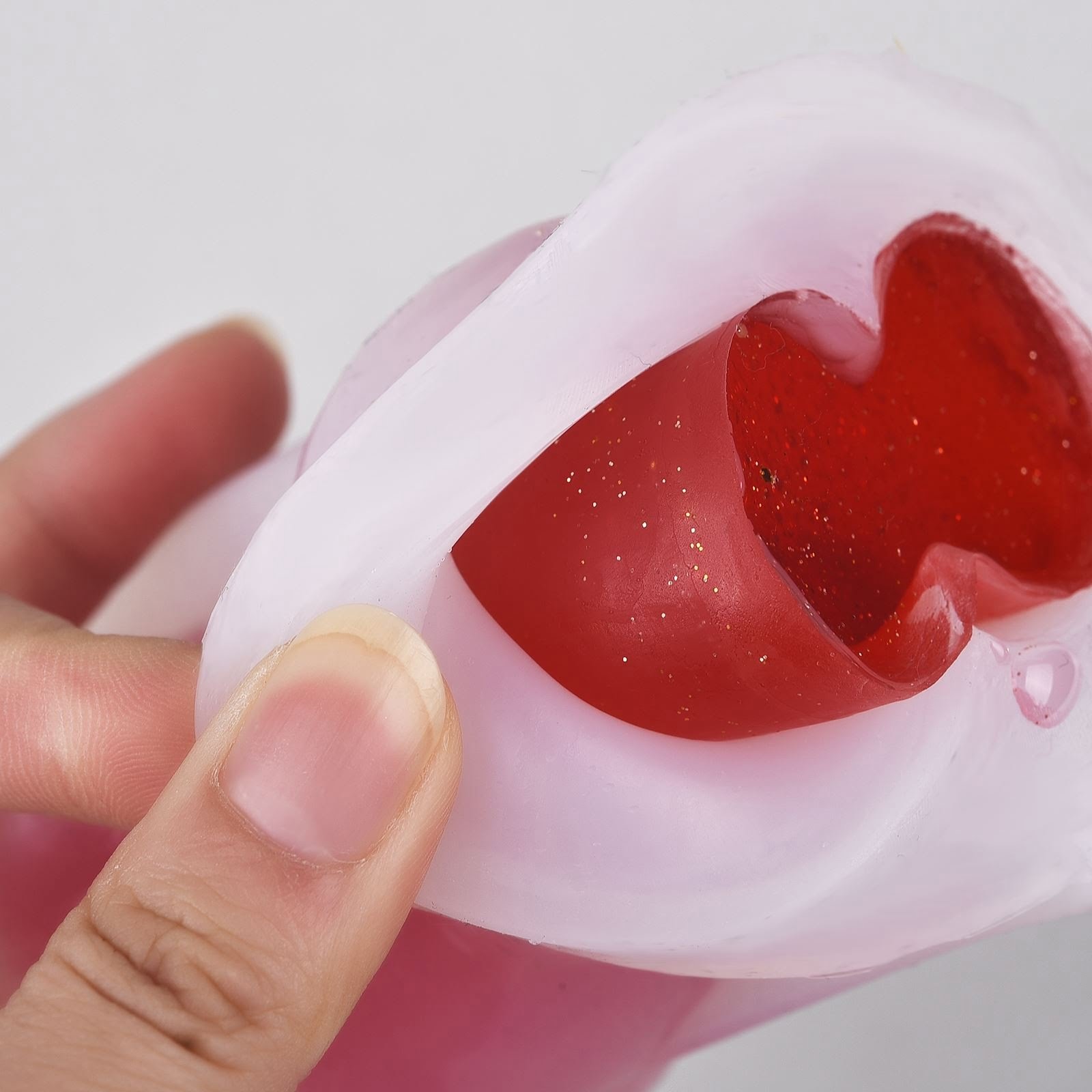Introduction
Candle making can be traced back to ancient civilizations, with evidence pointing towards the Ancient Egyptians being the first known to make candles from natural materials like beeswax and vegetable fat. Candles were a common source of light for many centuries and were also used in rituals and religious ceremonies as symbols of hope and devotion. Today, there are many types of candles that are made from a wide range of materials including wax, paraffin, soy, palm, coconut and beeswax. These modern candles can come in various shapes such as pillars, tapers and tealights as well as different colors.
Candles may also be scented with various types of essential oils or fragrances to help enhance any environment. Depending on their intended usage, certain candle making methods may be more suitable than others; some examples include dipping (also known as hand-dipping) or pouring wax into moulds. In addition to these traditional methods, new technology such as 3D printing can also be used to create specific designs for more intricate candles.
Materials Necessary for Candle Making
Candle making requires several supplies in order to make a quality product. Before beginning the candle making process, it is important to gather all of the necessary materials. The following supplies are recommended for candle making:
Wax ” A type of wax is needed for candle making such as paraffin, soy wax, beeswax, or palm wax.
Wick ” Wicks are what will produce the flame that burns the melted wax; most wicks come pre-tabbed, which means they already have a metal plate and tab attached on one end for placement into the mold or container for an easy pouring process.
Mold or Container ” This will hold the melted wax in order to form whatever shape you desire. Molds are also used when making candles with decorative effects.
Fragrance ” Fragrance can be added if desired; using fragrance oil is considered easier than using essential oil because they are much more concentrated and do not require as much to achieve a pleasant smell during the burning process. Additionally, essential oil must be placed carefully by dipping the wick directly into the oil before placing it inside the mold or container so that scent fills throughout entire surface area of the candle during burning without being too overpowering due to its strong concentration levels.
Dye Chips/Pellets ” These allow you to customize your candles with color if desired. It is important to note though that in some cases dye chips can cloud over clear wax mixtures during burning if too many are used or not properly blended together first prior to pouring into molds or containers.
Tools ” Various tools such as scissors, thermometer (not absolutely necessary but helpful), double boiler setup for melting your wax, ladles/spoons (to mix dyes and fragrances), potholders (to avoid burns from hot surfaces), paper towels (for cleanup of any spills) are designed specifically for candle makers and can be purchased at stores that carry specialized craft materials or online from websites like Etsy. Additionally having a dustcover handy will make cleanup much simpler after each session of working with melted waxes since it’s an incredibly messy material once heated up!
Preparing the Candle Wax
Preparing the candle wax is a crucial step in the candle making process. First, the wax must be melted before it can be poured into an appropriate container or mold. This can be done in a double boiler or a wax melter, depending on the type of wax being used. Once melted, you can then texture the wax for special effects such as swirls and marbling. To do this, you will need to add fragrances and/or colorings and stir thoroughly until combined.
Once you have prepared your candle mixture, it is time to pour it into your desired container. Place any molds on a stable surface with something beneath them to catch any dripping or spillage such as newsprint or cookie sheets. Then use either a pouring pot or ladle with handle to evenly fill each mold with hot melted wax. Try to avoid bubble traps which may form if the pour is too slow.
After pouring, allow your candles to cool for at least 24 hours before handling them so that they are completely set . Ensure that you store them properly away from direct sunlight and moisture otherwise their quality may deteriorate over time.
Preparing the Wick
Before beginning any candle making project, you will need to prepare the wick. The length of the wick will depend on the type and size of your container, as well as how long you want your candle to burn. Generally speaking, the bigger your container is, the longer the wick should be. You also need to pay attention to the weight of your wick, as this will affect how much wax can be melted and what size flame is produced when lit. It’s a good idea to experiment with different weights before starting. Once you’ve determined what length and weight are best for your project, you can make sure that the wick has been placed straight in the center of your container. This step is especially important if you plan on making multiple candles with the same template. Making sure that it’s centered allows each one to come out looking uniform and even.
Adding Fragrance, Color, and Other Adornments (if desired)
Once your candle wax has melted, you can add fragrance and/or color to the liquid wax. Before you do so, make sure to read the label of the fragrances and dyes that you are using. Most often, candle makers use a blend of essential oils and sometimes synthetic fragrances for scenting their candles. It is important to not add too much fragrance oil because this could result in an excessive amount of smoke coming from your finished candles. Mixing dye into your wax mixture can also affect how it burns. For a more vibrant color look for dye specifically made for candles as ordinary dyes do not work well when exposed to hot wax during pouring. If desired, other adornments such as dried flowers or herbs can also be added at this step in the process.
When adding any of these items to your candle, it is important to use safe handling techniques. Wear gloves if necessary to protect your skin and always keep heat sources away from flammable materials like essential oils and herbs. Additionally, ensure that all containers used fulfill safety standards so that they don’t become fire hazards while heating up or melting down the wax mixture. Precaution is key when working with materials such as candle dyes or fragrance oils; thus remember to follow instructions carefully when crafting your very own candles!
Pouring, Setting, and Finishing the Candle
Cooling and Cutting the Candle: Once the candle is done pouring and setting, it will need to be cooled before it can be cut. In order to cool the candle down, place it in a refrigerator for 10-15 minutes. After 10-15 minutes, remove the candle from the refrigerator and place it on a flat surface. Using a cutting tool such as a pair of scissors or a sharp knife, cut off any excess wax from the top and/or sides of the candle. Do not apply too much pressure when cutting as this could result in cracks or imperfections. From here your candle is now ready to be used!
Tips and Tricks to Get the Most Out of Your Candle Making Experience
When it comes to creating your own custom candles, there are plenty of tips and tricks you can use to make sure you get the most out of your candle making experience. Here are some creative ideas and recommendations to help you out:
• Try different scents – Whether you’re using essential oils, fragrance oils or even melts ” experimenting with different scents will give your candles a unique, individualised touch.
• Add texture ” For a unique look, add texture to the top of your candle by sprinkling natural elements such as herbs and spices on top before setting the wax.
• Use glass containers ” Glass containers are more versatile than metal containers when it comes to adding colour and decorations. You can paint the outside of glass jars or attach embellishments.
• Warm temperate setting ” Before pouring in your wax, make sure your wick is centered and secure in its place by dabbing a bit of glue on each end. When melting wax for the jar candles, stick with lower temperatures for best results (around 155F/68C). This will keep the scent from evaporating away too quickly!
• Pillar shaping ” To properly shape pillar candles simply pour a layer of liquid wax over the sides of the cake tin before filling with any extra wax. Once set up flip upside down and push down against a hard surface one time with great force. This will ensure that all pillars have smooth angled sides rather than round edges.
• Colouring & decoration – If you’re feeling particularly creative try adding dye flakes or chips while melting in order to give your project an additional fun colour! To decorate individual candles you can use felted items such as flowers, leaves, ribbons etc., and use hot glue to attach them permanently.
Different Candle Making Techniques to Try
Beeswax Candles:
Beeswax is a natural wax derived from honey bees. It is popular for candle making, as it gives off a pleasant scent when burned and produces an attractive, golden hue when melted. To make a beeswax candle, start by gathering all your supplies, such as wicks, containers (to hold the molten wax) and dye or scented oils (for added fragrance or color).
Then heat up the wax until it’s completely fluid. Pour the heated wax into your container of choice and leave it to cool slightly before adding your wick. For additional design elements, you can layer different shapes of melted wax in the container ” like layering light pink away on top of dark pink wax ” or mix in embedded items like dried flowers or glitter into your molten wax. Once completely cooled, remove your wick and reveal your beautiful beeswax creation!
Soy Candles:
Soy candles are becoming increasingly popular due to their environmental friendliness in comparison to paraffin-based candles. To make soy candles, gather all necessary supplies including wicks, containers (ideally those made for Soy), dye or scent oils and of course soy wax flakes. Before you get started melting down the flakes, give them a good stir with a wooden spoon which will ensure even distribution of additives and reduce air bubbles during the pouring process.
Next you’ll need to melt the flaked soy until it reaches around 200°F before pouring into containers – have patience throughout this process as it takes longer than paraffin-based candles. When ready to pour be prepared with something steadying where you plan to rest your candle while waiting for setup; Shake occasionally so that any decorative objects fall out of suspension without clumping at any one spot. Lastly let your candle cool naturally ” forcing uit could cause cracking ” before removing the wick and trimming if desired.. Enjoy!
Paraffin Wax:
Paraffin is an extremely versatile type of wax used to create many types of products but most notably candles! To begin assembling a paraffin-based candle, first prepare a double boiler where paraffin chips will be slowly melted until they reach liquid form; between 190 -200 °F is ideal temperature range! While melting begins be sure to fit with appropriate wick size depending on what vessel that holds liquid; shorter ones for thin jars vs taller for wide and deep molds ” since the premeasured length should never go beyond ¼” above top surface of liquid when poured in later step! When ready carefully select colors/scents desired then stir these additions into melted paraffin blend prior filling containers .. When ready carefully pour blended solution into preferred base allow for firm set up again ¼” above its final cap before hand over project which should require 12 hours maximum cooling time ! Carefully enjoy afterwards new creation…
Troubleshooting Common Candle Making Problems
Igniting: Igniting a candle is a common problem among newbie candle makers, and can stem from several causes. One of the most common causes of ignition issues is an improper wick size for the container. A wick that is too small, or too large, for your given candle container can lead to wicking problems and subsequent ignition. If you are having trouble getting your candles to stay lit, make sure to check your wick size to ensure it meets industry standards. Furthermore, container height and orientation can also impact how well a flame takes on a given candle; shorter containers will require larger wicks (and vice versa) while some containers perform best when oriented in certain directions.
Pooling: Candle pooling is another all-too-common phenomenon among those new to the craft. Pooling occurs when melted wax pools around the outside of your container instead of filling it out evenly. This typically happens in longer candles due to their increased surface area and lack of air flow in comparison with short candles (this creates hotter melting points). To avoid pooling it’s important to have as much air flow into your container as possible so that wax cools at an even rate throughout its entire surface area. You can also try raising or lowering your wick position slightly as this effects the entire burning area and thus affects the amount of heat applied to different areas of the wax pool itself.
Sinking: Sinking wicks are one of the most commonly encountered problems among starting candle makers! Wicks tend to sink within candles if they aren’t placed securely in terms of length (too long) and depth (not sunk far enough). Another common cause of sinking is using a type of wax more suited for pillars than votives or containers- each wax type has varying degrees used in different application categories so make sure you’re using one adapted for your goal! Similarly, tallow based fragrances can cause excessive heat generation near the middle portion of a container which can destabilize your chosen wax causing any attached wicks to sink further down within them!
Conclusion
Candle making is an enjoyable and fulfilling activity that can be done at home or in groups. Not only is it a great way to relax, it’s also a creative activity where you can express your imagination. Plus, the results are always impressive ” something you can take pride in and share with friends and family. With so many scent options available for candle making, having unique candles in your home gives off a pleasant aroma that adds atmosphere to your house.
Further, by creating your own candles from home, you have more control over the type of candle you get as well as the cost. You can avoid potential toxins or irritants that commercialized candles often contain and add any type of color or scent you prefer. Plus, if you choose to save money on essential oils or fragrances for your crafts, you don’t have to sacrifice quality ” therefore saving yourself some money.
Making candles is also a wonderful opportunity to create lasting memories with loved ones by enjoying the craft together while spending quality time with one another outdoors, surrounded by nature and beautiful scents. Additionally, personalized gifts created through candle making will make friends and family smile knowing all the effort put into crafting something made just for them ” creating moments they’ll remember fondly. So come up with creative ideas through candle-making as a fun way to show loved ones how much they mean to you; whether with a simple gesture such as homemade soap candles (which are also great beginner projects) or intricate creations like soy rolling candles (which require more expertise), let the creativity flow through!

Welcome to my candle making blog! In this blog, I will be sharing my tips and tricks for making candles. I will also be sharing some of my favorite recipes.





